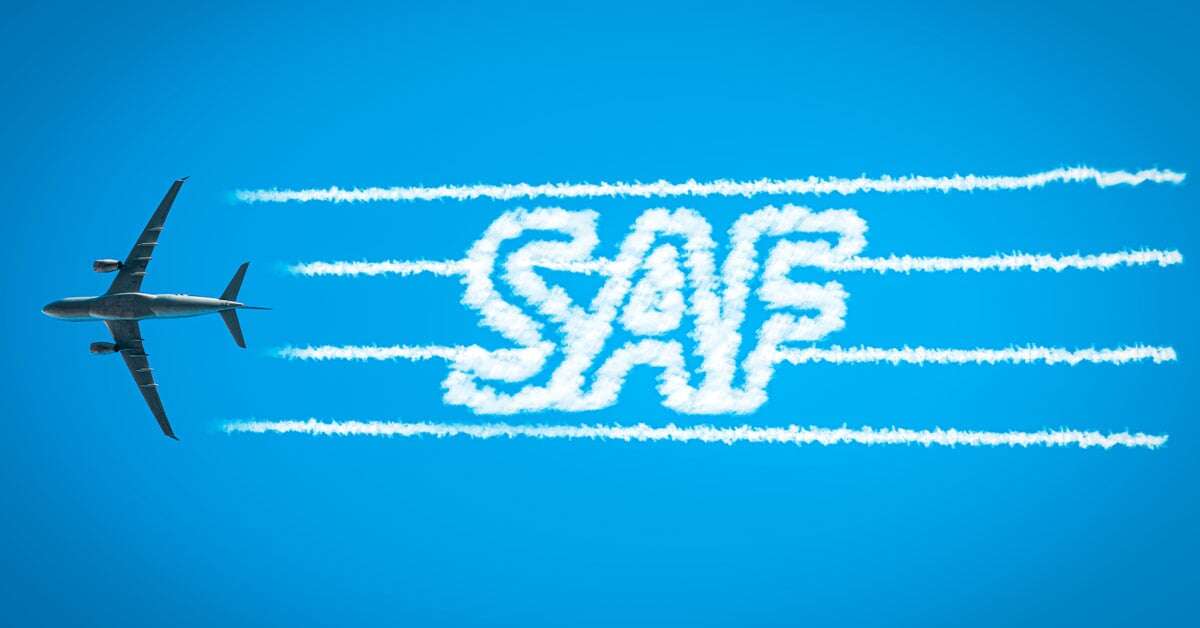3 min read
First 100% SAF Transatlantic Flight, Subsidies Push Renewables
 Harvey Greer
:
Dec 1, 2023 12:00:00 AM
Harvey Greer
:
Dec 1, 2023 12:00:00 AM

Virgin Atlantic announced a historic moment in the adoption of sustainable aviation fuels (SAF). Flight100, a Boeing 787, flew transatlantic from Heathrow in London to JFK in New York with a tank full of only SAF. This news marks a substantial milestone toward renewable fuel adoption across the airline industry.
According to a press release from Virgin Atlantic Airlines, the 100% sustainably-derived fuel can serve as a full drop-in fuel to replace fossil fuel sources. Led by Virgin, the breakthrough reflects an expansive partnership across multiple entities:
- Boeing (a Boeing 787 jet used the fuel)
- Rolls-Royce (the flight used Rolls-Royce Trent-1000 engines)
- University of Sheffield
- Imperial College London
- Rocky Mountain Institute
- ICF
- UK Department for Transport
The fuel is comprised of a blend of renewables:
- 88% Hydroprocessed Esters and Fatty Acids (HEFA): HEFA is derived from various waste fats such as UCO.
- 12% Synthetic Aromatic Kerosene (SAK): SAK provides needed aromatics within a jet engine to allow it to properly function.
Taking a Goal from Research to Reality
A key aspect of this initiative is testing the new fuel in a practical, real-world setting. The successful flight across the Atlantic Ocean certainly proved that 100% SAF-equipped flights are capable of that objective.
Another important piece of the puzzle is measuring actual emissions from flights using SAF. The fuel outputs non-carbon emissions. Much of the research in this field focuses on these particulates and how they may impact the atmosphere.
The group of above-mentioned organizations will share their findings with the airline industry. This research will provide a clearer roadmap of how to achieve full renewable fuel usage across the entire aviation industry.
Hastening the Call for Change
In the rapid shift towards sustainability, a serious amount of attention has moved to aviation. The commercial airline industry only accounts for about 2.4% of carbon emissions. However, it's the outlook into the future that matters in this context.
Other big polluters, such as the automotive industry, have already begun actively and aggressively moving to renewables. As more cars become electric and produce less CO2, the percentage of carbon emissions from the airline industry will keep moving up.
Why is the airline industry lagging behind? The challenge in commercial flights has historically come down to fuel.
Currently, the commercial airline industry has only adopted about 0.1% of SAF in global jet fuel usage. And most standards currently allow for a mixture of only 50% SAF in commercial jet engines.
This maximum requirement was adopted as a transitional number, both for fuel safety standards and a more realistic number to reach. But Virgin Atlantic’s monumental flight shows that we are already looking down the runway to a much faster adoption of full SAF in commercial flights.
Similarly, many experts were unsure if a 100% SAF flight could provide enough energy to even allow major international flights with large jets. As the news of Virgin Atlantic’s flight makes the headlines, it’s clear that this is a challenge that has now been overcome.
Managing the High Cost of SAF
Like every other commercial entity in the world, what this issue ultimately boils down to is cost. And that is one of the largest hurdles currently keeping SAF from really taking off.
In some areas, current SAF costs can rise to nearly 2.5 times the cost of fossil fuels. For most airlines still recovering from pandemic-era losses, the cost remains far too high to adopt this alternative fuel on a broad scale.
Despite these challenges, there is some very good news both right now and down the road.
Airport Subsidies to Reduce SAF Usage Cost
To encourage the adoption of renewable fuels, many airports are offering airlines subsidies to help cover the extra costs. For instance, London’s Heathrow Airport covers half of the extra cost of SAF to airlines that use it in their fleet.
Other airlines are also taking up this strategy to move the adoption process along faster than some legislation can keep up. Airports will likely find ways to better subsidize SAF costs in the pursuit for the title of “most sustainable airport.”
R&D, Other Incentives Driving Down SAF Prices
To put it simply, the writing is on the wall for fossil fuels. Sustainably sourced fuels from renewable feedstocks are rapidly repositioning how we understand fuel needs and usage. This will mean an ever-increasing amount of resources devoted to sourcing, creating and improving the production of these fuels.
As more producers focus on renewable feedstocks, we’ll see continued innovation and technology breakthroughs in SAF production. This, in turn, will help draw the prices downward to become much more competitive with fossil fuels.
In the meantime, all sorts of cost-saving options are available. Current initiatives such as the US-based Inflation Reduction Act provide early adopters plenty of incentives to start making the switch now. Many other countries also offer benefits to those who decide to transition sooner.
Insights, Commentary and Data: Quality Matters in the Renewables Market
The transition to renewable fuels is moving quickly. Is your business prepared for the changes?
You need a report that can help you manage the process through the carbon transition. Prima’s Carbon Mitigator Report from ResourceWise can help.
This report offers critical data and updates centered on the carbon transition. This vital information can help you stay ahead of the curve in your own organizational planning, investments, and strategizing.
Learn more about the Carbon Mitigator report, available in ResourceWise’s Prima CarbonZero platform.




